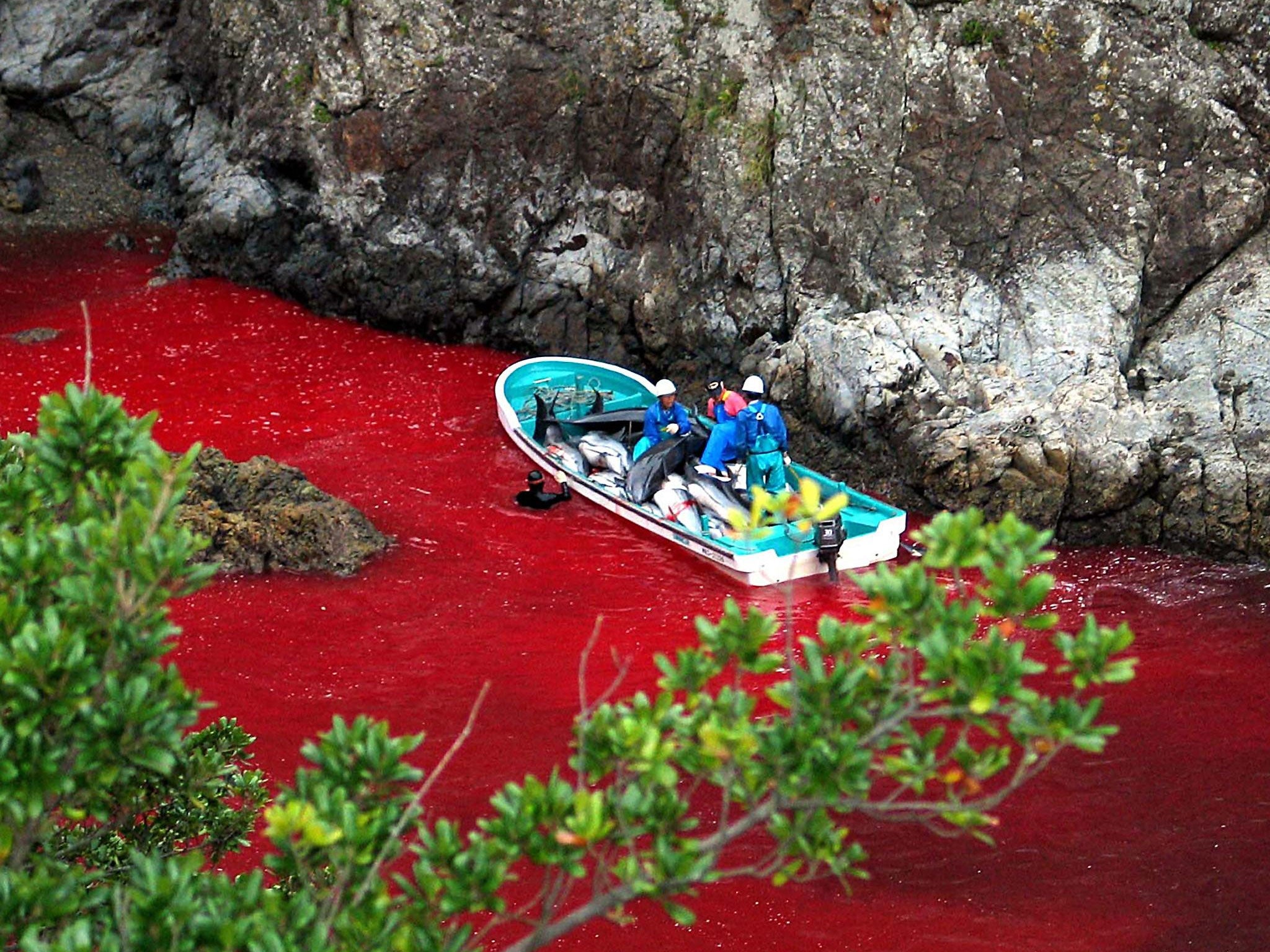Taiji Cove dolphins: This slaughter must stop
Those of us who are sickened by what’s happening can be part of the solution


The eyes of the world are watching in horror as 250 bottlenose dolphins, who were herded into the now infamous “killing cove” near the small Japanese village of Taiji several days ago, are now being slaughtered one by one by Japanese fishermen. By the time it’s all over, the sea will be red with the blood of these innocent animals.
This horrific massacre goes on for six months a year during which time more than 20,000 dolphins and small whales – including babies and their mothers – are corralled into shallow waters, disorientated with underwater sounds, run over in boats, netted, starved for days and then killed by having their throats cut with knives or by having metal spears driven into their spinal cords in front of their terrified families. Dolphins are so devoted to one another that even those who escape from the killing area have been known to linger nearby to wait for their family, even if that means being killed themselves.
It is commonly assumed that the Japanese fishermen hunting these highly sentient beings do so to supply a small minority of Japanese people with dolphin meat. But in fact, the Japanese government issues permits to kill dolphins in order to prevent them from consuming the fish in Japan’s surrounding oceans, which it prefers to reserve for human consumption.
The 2009 Oscar-winning documentary The Cove opened people’s eyes to the annual massacre in Taiji in the same way that the recent BAFTA-nominated film Blackfish brought attention to orcas and dolphins in captivity. Many of Taiji’s “prize catch” are removed before slaughter and sold for use in captive-dolphin shows and swim-with-dolphins programmes.
Life in marine theme parks is appalling for these smart and sensitive animals who in the wild would live in large and intricate social groups and swim together up to 100 miles a day. Female dolphins spend their entire lives with their mothers and sisters within the family pod. They communicate with each other through whistles and body language, and when dolphins are injured or dying others will come to their aid, supporting them at the water’s surface so that they can breathe. At some marine parks they have nothing to do but swim in endless circles in tiny and barren pools. Their sonar bounces back at them off the walls of the tanks and often drives them crazy. Dolphins live about 45 to 50 years in the ocean, but more than half die in their first two years of captivity .
Dolphins are made of flesh, blood and bone, just as we are, and of course, they can feel terror and pain, just as we do. Those of us who are sickened by what’s happening in Taiji right now can be part of the solution. You see, each dolphin captured is worth hundreds of thousands of pounds to the dolphin display industry, which makes the annual slaughter a highly profitable venture for a handful of fishermen in this tiny town. By refusing to visit any dolphin displays, we can help stop dolphins from being stabbed to death, abducted from their families and forced to live in barren concrete tanks.

Join our commenting forum
Join thought-provoking conversations, follow other Independent readers and see their replies